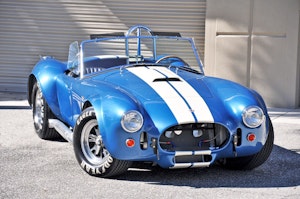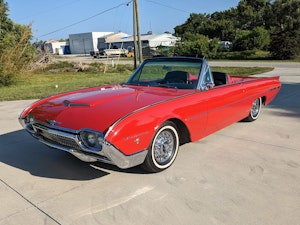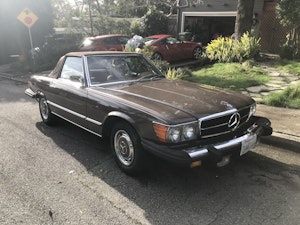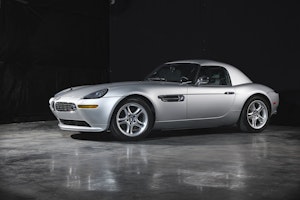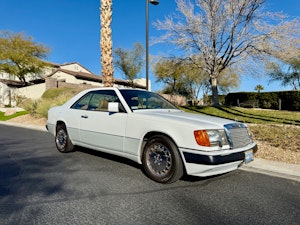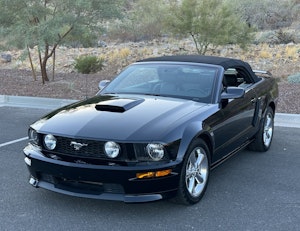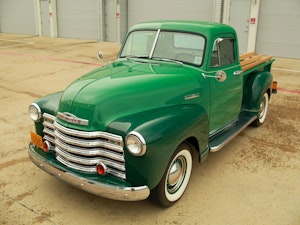Thunder from Down Under: How Australia’s auto industry flexed its muscles
With the exception of Mad Max’s modified Ford Falcon XB coupe in the first two of Mel Gibson’s films, few people outside Australia are familiar with the V-8 muscle cars that roared across the Australian landscape between 1967 and 1978.
Yet they make an interesting choice for lovers of British cars, as they are genuine right-hand drive muscle with some advantages over their American cousins. The 1972-78 Ford Falcon XA, XB and XC coupes weigh about 500 pounds less than the similar American Ford Gran Torino GT coupes and are about two feet shorter. Gearboxes are 3-speed automatic or four-speed manual. Without U.S. emissions, their engines can mine 385 horsepower from a 351-cubic-inch Cleveland V8.
The earlier Falcon XT, XW XY GTs with the Phase III HO (Handling Option) are red-hot four-door sedans, capable of 141 mph off the showroom floor, 0-100 mph in 14.6 seconds and about 155 mph with the rev-limiter disconnected. In fact the formidable XY was responsible for the disappearance of the Australian V-8 for 10 years, though blame can be laid at the feet of Sydney Morning Herald Motoring Editor Evan Green. He warned of “160 MPH SUPER CARS SOON” in a page one story on June 25, 1972, and it started a “speed kills” witchhunt among politicians seeking re-election (i.e. all of them).
A more significant story ran earlier in the Australian “Wheels” magazine with an over-the-shoulder cover photograph of editor Peter Robinson’s hands on a Falcon XY GT steering wheel, as the speedometer read 144 mph. The ensuing outcry from do-gooders and insurance companies meant that manufacturers retreated from performance – just like in the U.S. – and V8s disappeared by the late ‘70s.
The horsepower gauntlet was thrown down initially by Ford with the Falcon XT GT sedan which won the 1967 Bathurst 500-mile race and began the rivalry which continues today. Then in 1968, three XTs won the team prize in the London-Sydney Marathon, finishing third, fifth and eighth. A Hillman Hunter was the overall winner, but Chrysler Australia was so surprised that they never capitalized on their success.
Marketplace
Buy and sell classics with confidence
Meanwhile over at Holden, GM’s Australian subsidiary, the new 1968 HK Monaro coupe offered a 327 cubic-inch V8 option in the GTS coupe. The big motor, heavy clutch and four-speed gearbox made it a beast in the city but it was fast and durable enough to beat Ford at Bathurst, and the V-8 race was on. Holden built its own domestic V-8s, but the later HT Monaro used the universal Chevrolet 350 cubic-inch engine. Holden also developed the smaller Torana, which replaced the English Vauxhall Viva in 1969, and offered engines from a 1,300cc 4-cylinder to a 2,850cc 6-cylinder. The big-engine Torana was offered in XU-1 guise with three Stromberg carburetors and was adopted by the New South Wales police as their pursuit car – very Mad Max.
Chrysler’s VH Valiant Charger sport coupe of 1971 was a unique Australian design, unrelated to the U.S. roots of Dodge and Plymouth. Though available with a V-8, the hottest setup was a 4.3-litre, 6-cylinder with hemispherical head and three Weber carburetors almost bigger than the engine. The E38 option was billed as the fastest 6-cylinder you could buy, generating up to 320 horsepower with a 14.7-second quarter-mile.
Australian auto production is relatively small. There were fewer than 100,000 classic muscle cars built in 10 years, and a lot of these were simply used up in their home market. But much of Australia is a fairly moderate climate – except for the tropical north – so sound examples do exist. A number of experienced shippers can help you find the car you want and make sure that it arrives safely.
Phil Newell at www.aussiecoupes.com has been shipping cars between Australia and the U.S. for more than 15 years and recently moved back to Queensland. He says the appeal of Australian muscle cars is their rarity; they were made in small numbers, driven hard and are all about 40 years old, not subject to later restrictions. His website details and illustrates models to look for. If you want to see what’s currently available on Australian websites, check here: www.justcars.com.au or www.carsales.com.au.
Here are some of Phil Newell’s estimates of values for the most important Aussie Muscle cars. High performance models command the strongest prices and with the exception of the 1967-71 Falcons, which were only built as 4-doors, coupes bring about double the price of other body styles, including sedans, utilities (‘utes’) station wagons and sedan deliveries. As with any collectible car, make sure you get what you pay for, have a pre-purchase inspection and check chassis numbers.
FORD
- 1967-71 Falcon XR, XT, XW, XY GT 4-door: $65,000-$120,000 (Phase III HO most desirable, tributes and clones half price or less).
- 1972-77 Falcon XA, XB, XC GT coupe and 4-door: $20,000-$75,000. Add for XC Cobra, John Goss Special. (Mad Max replicas depend on quality, other tributes and clones half price or less).
HOLDEN
- 1968-76 Monaro HK, HT, HQ, HJ, HX Coupe: $10,000-$45,000 (earlier GTS models most desirable)
- 1969-76 Torana LC, LJ, LX Coupe and 4-door: $10,000-$45,000 (earlier GTR and XU-1 and A9X competition packages most desirable
CHRYSLER
- 1971-78 Charger VH, VJ, VK, CL Coupe: $5,000-$60,000 (R/T and performance packages E38, E49 and E55 are most desirable; plush 770 is overlooked. The 4.3-liter hemi 6-cylinder is faster and preferred over V8s).

